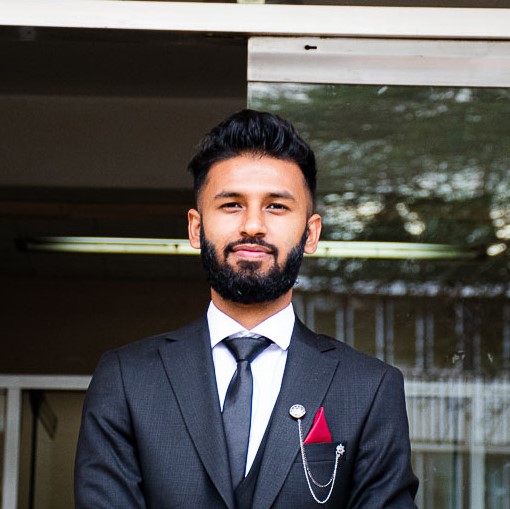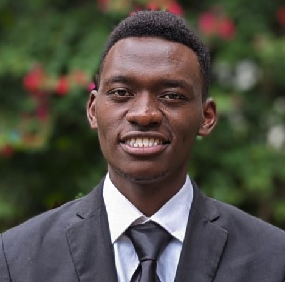Challenge 6: Behavioral Change for Water Justice
H2-ALL: Making Water Accessible To All

The Problem
Water; we mindlessly use it every day, but do we know how much of it we actually use? Worse still, what happens when we no longer have any of it?
This question became a stark, near apocalyptic reality for the residents of Cape Town as Day Zero – the day when the taps would run dry – approached. The rains had failed for two consecutive winters causing the water reservoirs to nearly run dry and inevitably, the water rationing measures gradually became stricter. With each passing day, it became increasingly clear that drastic behavioral changes had to be effected in order to not only make water easily accessible, but also to make the most of that which was available. This therefore forms the premise of the challenge presented before us: what solutions can we innovate that will nudge us to improve our water consumption habits, to make this precious resource equitably available to all who need it?
The Motivation
One of the biggest contributors to the inefficient water usage observed across citizens of South Africa is simply a lack of vital information regarding their consumption habits. As Day Zero approached, it was often reported that users could not accurately quantify the amount of water they used for such uses as showering, yet they had a limited amount of the resource available – sometimes a mere 50 litres per day. This exacerbates an already dire situation given that the water consumption per capita per day (l/c/d) is already nearly twice as much as the global average, demonstrating an urgent need for informing the populace of their daily usage for them to make critical adjustments to their habits.
It’s all about changing the mindset and understanding that water is a reusable, not a renewable, commodity.
Zoë Rushin, Facilities Manager at Old Mutual.
With this in mind, we sought out to innovate an actionable solution that would not only provide the consumer with relevant information regarding water conservation – essentially giving them the opportunity to educate themselves on better habits- but would also aid the consumer in making significant water savings. To achieve this, we envisioned the following procedure to effect a long-term behavioural change:
Step 1: Inform
This would involve the provision of relevant, educative tips and recommendations with regards to water conservation. Ideally, this should be presented in a regular, easy-to-consume format, with vivid graphical description.
Step 2: Monitor trends
Over a set period of time and through the use of metering devices, the consumer would be empowered to accurately monitor their consumption and compare it to benchmarked quantities, such as their previous trends or those of similar households. This would give the consumer a comparative picture of their consumption and help in developing a visual model of their consumption habits.
Step 3: Decide
Having given the consumer accurate, relevant and personalized information regarding their consumption, they would be well-equipped to make conscious decisions in improving their behaviour. The change would therefore have been effected from within the consumer which is expected to be more sustainable than compulsion through enforcement.
The Proposed Solution
With the mass proliferation of smartphones today, one of the easiest and most accessible means of quickly and effectively sharing information is through mobile and/or web applications. These facilitate quick and interactive means of accessing information at little to no cost. For these reasons, we aimed to develop a mobile/web application that would serve as an information resource for the user, through which they can access timely, relevant and highly curated tips and recommendations with regards to water conservation.

The app – appropriately named ‘H2-ALL; Making water accessible to all’ – would ideally be available to smartphone owners via the Google PlayStore or Apple AppStore, though at the time of publishing this post, it had been developed as a web application. This product would bear multiple features accessible through a ‘Freemium’ Business model which would cater for the needs of a multiple income groups. Below are some of the proposed features of the H2-ALL app:
Free Version
Universal Access to Information
- Daily reminders with water conservation tips, facts and recommendations.
- Benchmarking using a Water-Footprint Calculator
- Goal Setting – Set your consumption goals
- Access to information in different languages
- Chatbot
Premium Version
Personalized Tips, Massive Water Savings
- All Free Features
- Discounted prices for smart meters
- Consumption Trend monitoring and visualization.
- Live, personalized recommendations based on your water usage data.
- Leak Detection
- Access to community chatrooms and leaderboards.
The Free Version – Universally Accessible Information for Behavioural Change
This is the main premise of the solution that aims to supply the user with a steady flow of water-conservation information. A recent study by Impact Research International and the University of Houston reported that by educating households on water conservation, they were able to achieve as much as 10% in water saving potential. This demonstrates the feasibility of this fairly simple solution.
At absolutely no cost and through partnership with such firms as the Water Research Commision (WRC), we envision the provision of regular reminders, tips and recommendations through the app to our users. These would be sensibly spaced out over the course of a day in order to keep the user constantly up to speed with the most relevant water saving information that they would need. Picture the notifications you often receive from such apps as Facebook and Twitter that always grab your attention.
Through the app, the user would also be empowered to calculate their average consumption through an integrated water-footprint calculator, which would provide a benchmark for the user to make a more informed decision about their habits relative to a standardized consumer; effectively nudging them to better habits.
Besides this, further development of the app would include an intuitive chatbot and access to this information in a variety of languages, with the aim of making access to the information as inclusive as possible.
The Premium Version – Personalized Tips, Massive Water Savings
This version of the app aims to provide the user with personalized, highly curated water conservation information through the integration of smart water-meters into their water supply systems. Ideally, through partnership with smart meter suppliers and local municipalities, the app users would have the meters installed at critical water points such as the showers, kitchen taps, garden taps and laundry taps where the consumption data can be collected at the source. This data would then be processed through the app and fed back to the user through an integrated monitoring environment, complete with vivid visualizations with graphs, dials and other visual displays.
It is important to note that the implementation of this premium version comes at an extra cost – and expectedly so- but the benefits of it far outweigh the potential starting investment. To begin with, the user is provided with an opportunity to create a household profile – data such as the number of people in the household and water appliances – through which standardized household consumption rates can be compared with the actual, locally gathered data. This provides the app with cleaner, more useful data that would then be used to generate personalized tips. For instance, say the smart meters register a flow of 60 litres through your shower module, yet the average consumption recommended by WRC’s findings is 30 litres. The app would promptly notify you of your exceeded consumption and provide you with a shower-related tip e.g military showering techniques. Smart, isn’t it?
With live monitoring of your consumption, it is also possible to detect system flaws and abnormal flows such as those caused by leaks, through the app. For instance, if a flow is detected through an appliance that has not been used in a while, this may point to a flaw that the app user can easily identify and promptly act on.
The premium version also gives users access to a community of smart meter owners, where they can share insights among themselves on more water conservation tips. Further, we aim to include an incentivization feature such as a leaderboard, to further nudge users into behavioural change through the gentle ‘peer pressure’ of competition.
Have a go at the (still in-development) app here.
The flow chart below explains the general principle of the app’s operation.

The Business Model
As earlier stated, this product takes on the ‘FREEMIUM’ business model in order to widen the client base as much as possible while maximizing the spread of useful water conservation tips. The free version targets the lower income households who may typically not be in need of smart metering systems but require support in changing their water usage behaviour. This promotes the inclusivity of the app.
On the other hand, the premium version targets the middle to higher income households that may be capable of paying a few extra coins to install smart metering systems into their homes. It should be noted these households typically consume more water than other income groups, thus any water savings achieved from them can be redirected to the groups that more desperately need the water – thereby contributing to water justice.
Partners
For the success of this product, it will be crucial to form partnerships with relevant institutions and organisations who will drive its mission. We are keen to promote the success of the efforts of all stakeholders in the push for water justice in the communities. These partners include, but may not be limited to:
- The Water Research Commission (WRC), through which their reliable data, facts, tips and recommendations on water conservation can be shared on our platform.
- Smart-meter suppliers who will be given a platform to easily sell their products, thereby furthering their reach.
- Learning institutions and other social institutions, which are critical in promotion of behavioural change and have ground-contact with water consumers and potential app users.
- Other stakeholders in the water industry.
Potential Marketing Strategies
In order to promote the adoption of this product, we propose the following marketing strategies:
- Social Media Campaigns – these may be the quickest means of bringing the product closer to the user on the platform on which they will use it
- Marketing campaigns in social places and events, eg festivals, learning institutions, religious institutions
- Partnerships with firms in the water industry, such as meter suppliers, bottlers, local municipalities, through which cross-promotion can be adopted.
Revenue Streams
The following are avenues through which we intend to benefit from the commercialization of this product:
- In-app advertising by clients who may want to utilize our client base
- Commissions from the in-app purchases of the smart meters
- Revenue from app downloads as negotiated with Google PlayStore and Apple AppStore.
Through this model we aim to develop an effective, easily adoptable and sustainable product that will contribute to the achievement of behavioural change for water justice.
The Solution Team
This concept has been developed through the concerted efforts of these individuals, who are all Mechanical and Manufacturing engineering graduates from the University of Nairobi.

Hannah Wanjau
Team Lead
BSc. Mechanical and Manufacturing Engineering, The University of Nairobi

Dave Charles Nguyai
Member
BSc. Mechanical and Manufacturing Engineering, The University of Nairobi

Areeb Ahmed
Member
BSc. Mechanical and Manufacturing Engineering, The University of Nairobi


